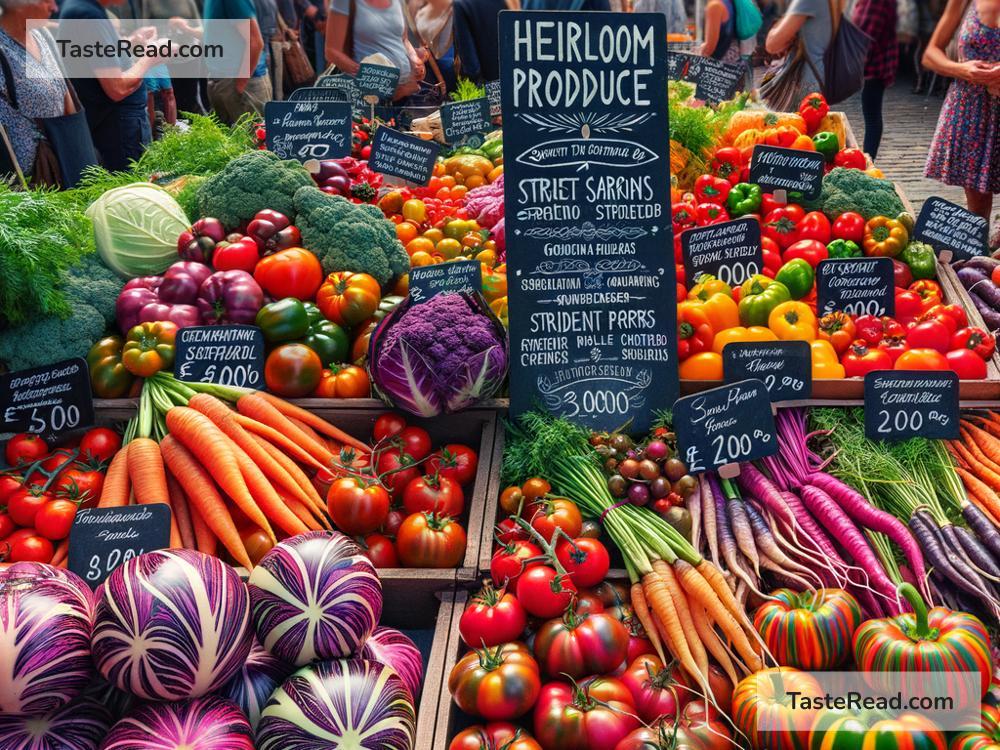The Future of Heirloom Crops: Why They Matter in a Changing World
In an age where technology is transforming everything from how we communicate to how we grow food, there’s something special about heirloom crops. These are plants that come from seeds passed down through generations, often cherished for their unique flavors, colors, and resilience. While the world races toward high-yield, genetically modified crops, heirloom varieties remind us of the beauty and importance of biodiversity. So, what does the future hold for heirloom crops, and why should we care? Let’s dive into this fascinating topic.
What Are Heirloom Crops?
Before we look ahead, let’s better understand what heirloom crops are. Unlike hybrid or genetically modified plants that are created in labs or farms more recently, heirloom crops are “old-fashioned” varieties. They’ve been cultivated for decades, even centuries, without intensive breeding to prioritize traits like uniform size or resistance to pests. Many heirloom crops are open-pollinated, meaning they reproduce naturally through wind, insects, or other natural processes.
While heirloom crops don’t yield as much as modern varieties, they carry treasures that make them irreplaceable. These treasures include exceptional flavors, adaptability to tougher environments, and the possibility to preserve cultural traditions. For example, Cherokee Purple tomatoes, an heirloom variety, are famous for their rich, smoky flavor—not something modern commercial tomatoes can match.
The Challenges Facing Heirloom Crops
Despite their benefits, heirloom crops face serious challenges. The global food system prioritizes efficiency and volume, meaning big farms and grocery stores often favor high-yield crops that are easy to grow and transport. This creates a tough environment for heirloom varieties, which may not produce the same quantity of food or may require more attention from farmers.
Climate change is also making life harder for heirlooms. Extreme weather events, shifting rainfall patterns, and increasing temperatures threaten crops that have been suited to particular local environments. Since heirloom crops have not been genetically engineered, they might struggle to adapt to rapid shifts without human help.
Finally, there’s the issue of loss of interest. Younger generations might not know about heirloom crops or why they matter. With convenience and affordability driving most food choices, heirlooms can’t always compete in a market dominated by cheap, mass-produced options.
A Bright Future for Heirloom Crops
Despite these challenges, the future of heirloom crops is promising, thanks to growing awareness about their value. As more people seek locally grown, sustainable foods, heirlooms are finding their place again. Here are some reasons why heirloom crops might thrive in the years ahead:
1. Rising Demand for Diverse Flavors
In recent years, foodies, chefs, and home cooks have been shining a spotlight on heirloom crops. People are excited by unique flavors and vibrant colors that can’t be found in mass-produced varieties. For example, heirloom carrots come in purple, yellow, and even white shades, adding a burst of color to meals.
Food enthusiasts recognize that taste and texture matter, and heirlooms deliver on both fronts. As awareness spreads, restaurants and farmer’s markets are showcasing rare crops, adding value to the heirloom variety.
2. Support from Small Farms and Gardens
Heirloom crops are staples for small-scale farmers and backyard gardeners. These growers often prefer them because heirloom seeds can be collected and replanted each season, unlike hybrid or patented seeds that must be purchased again. Additionally, heirlooms tend to thrive in diverse conditions, making them ideal for small farms that practice sustainable agriculture.
Community-supported agriculture (CSA) programs and farm-to-table movements are giving small farms a voice again. By supporting these initiatives, consumers are indirectly supporting heirloom crops—a win for diversity and sustainability.
3. Climate Adaptation Potential
While climate change threatens all crops, heirlooms could actually hold some answers to agriculture’s future. Their natural genetic diversity makes them valuable for studying traits that help certain varieties adapt to harsh conditions. Scientists are increasingly looking at heirloom plants to understand how to breed climate-resilient crops.
For example, heirloom grains like millet and spelt are known to thrive in dry conditions, making them possible candidates for regions affected by drought. By protecting these varieties, we preserve a toolbox of solutions for future challenges.
4. Preserving Food Heritage
Heirloom crops are more than just seeds—they represent history and culture. Many heirloom varieties carry stories of families, traditional recipes, and regions where they were first grown. By cultivating heirlooms, we can preserve a connection to the past as we move toward the future.
Groups like seed banks and heritage farm organizations are working hard to keep heirloom seeds alive. These efforts ensure that we don’t lose the valuable cultural diversity embedded in heirlooms.
What Can We Do to Help?
If you want to support the future of heirloom crops, there are simple steps you can take:
– Buy Local: Visit farmers’ markets and support growers selling heirloom fruits and vegetables.
– Start a Garden: Grow heirloom varieties at home to learn about their value firsthand.
– Learn and Share: Educate yourself and others about why heirloom crops matter in today’s world.
– Advocate for Biodiversity: Speak out about the importance of preserving genetic diversity in agriculture.
Final Thoughts
If we look beyond the challenges, the future for heirloom crops is bright. These treasures of the past have much to offer us—from flavor and resilience to cultural pride. As more people recognize the importance of biodiversity and sustainability, heirloom crops will continue to play a vital role in farming and food systems. The seeds of the past might just hold the key to feeding the future, so let’s work together to protect them.


